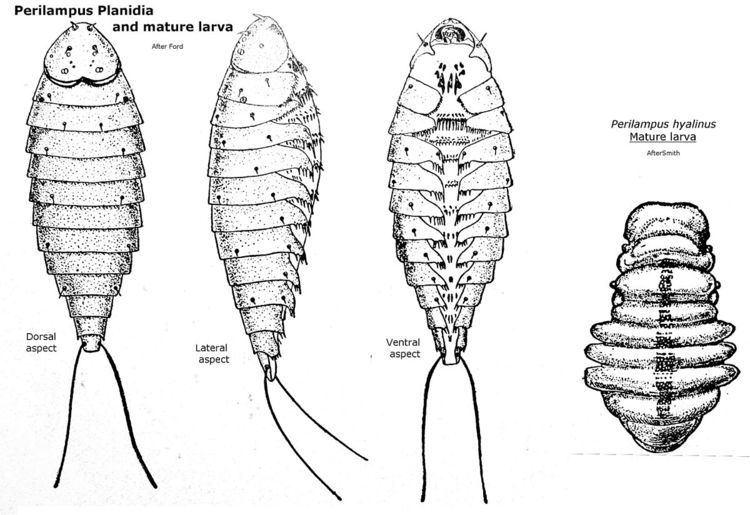 | ||
Hypermetamorphosis is a term used in entomology that refers to a class of variants of holometabolism, that is to say, complete insect metamorphosis, but where some larval instars are distinct from each other.
Contents
Description
Hypermetamorphosis, as the term normally is used in entomology, refers to a class of variants of holometabolism. In hypermetamorphosis some larval instars are functionally and morphologically distinct from each other.
The general case in holometabolous insects such as flies, moths, or wasps, is that all larval stages look similar, growing larger as the insect matures. In hypermetamorphic insects however, at least one instar, usually the first, differs markedly from the rest. In many hypermetamorphic species, the first instars are numerous, tiny, very mobile larvae that must find their way to a food source. The general term for a mobile first instar is a planidium, from the Greek language πλάνος (planos) meaning "roaming".
In typical examples the first-instar larval morphology is campodeiform (meaning: elongated, flattened, and active, more or less resembling the morphology of insects in the genus Campodea). There is however, considerable variety in the forms of planidia that occur in various families and orders; in the beetle family Meloidae, the three-clawed planidium originally was called a triungulin, and similar planidia for example, those of the Strepsiptera, may also be called triungula.
In their planidial form, many species do not feed; they first change their skin and change their bodily form to a form suited to eating rather than seeking out food. The second instar is completely different in appearance and behavior, often becoming grub- or maggot-like in the instars before pupation. As a rule, the instars after the first ecdysis are of more or less constant form and not highly mobile, being specialised for feeding and growth until the final larval instar metamorphoses into the pupal form.
There are examples of holometabolic species in which there are certain striking differences between the earliest instars and the later instars, though without their generally being regarded as hypermetamorphic. For example, early instars of many Papilionidae are of a colour, shape and texture that suggest bird droppings; later instars that are larger and would simply stand out in such camouflage, typically become leaf-green.
Various forms of hypermetamorphosis
Hypermetamorphosis usually occurs as an adaptation of the ontogeny of certain parasitoid insects, notably:
Technically, the subimago of the Ephemeroptera might be described as a stage in a form of hypermetamorphosis, but that is not common practice.
Examples of hypermetamorphosis in any given insect order are analogous and not homologous to those in any other order; for example, hypermetamorphosis in the Acroceridae was not derived from the Strepsiptera, much less the Ephemeroptera.
